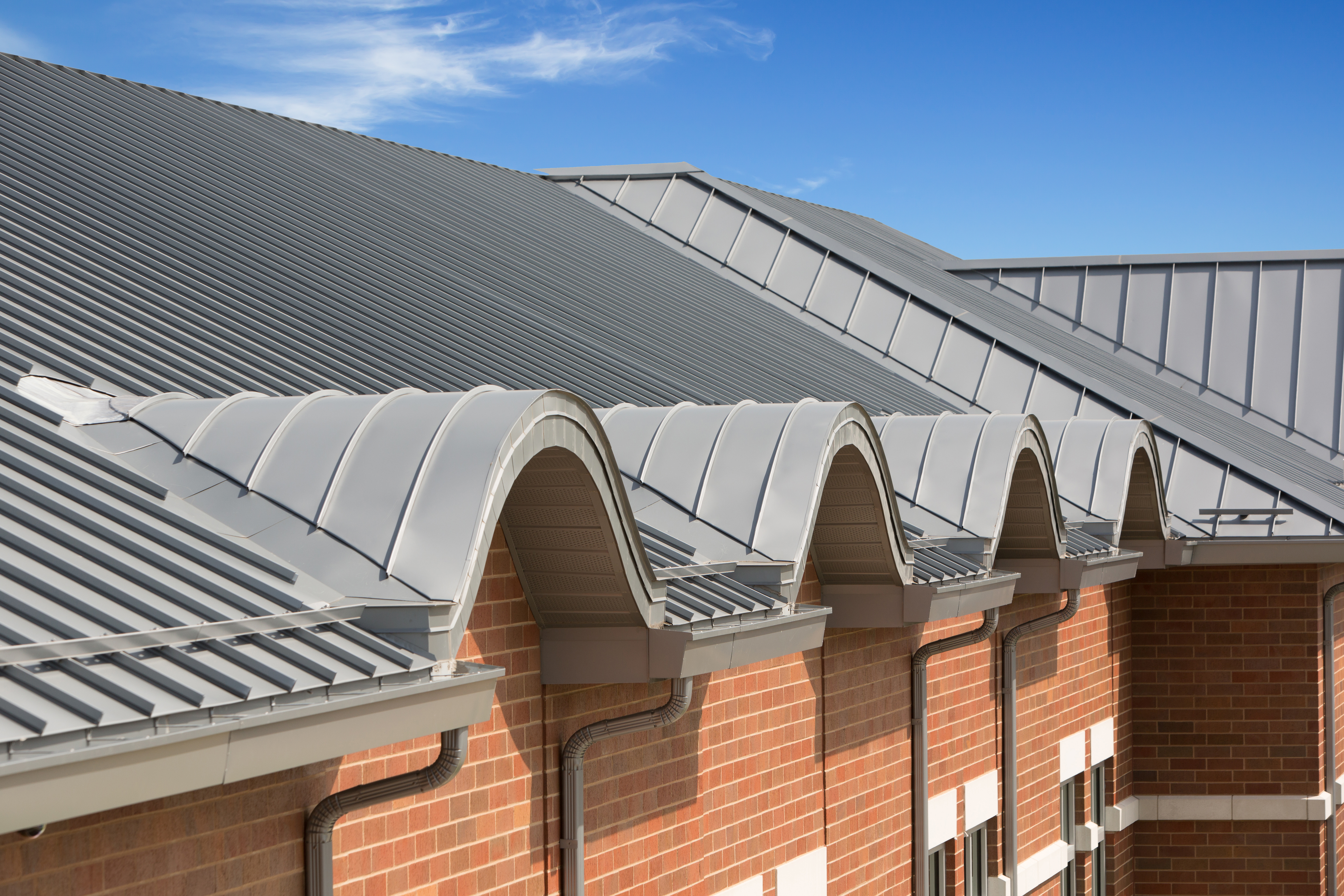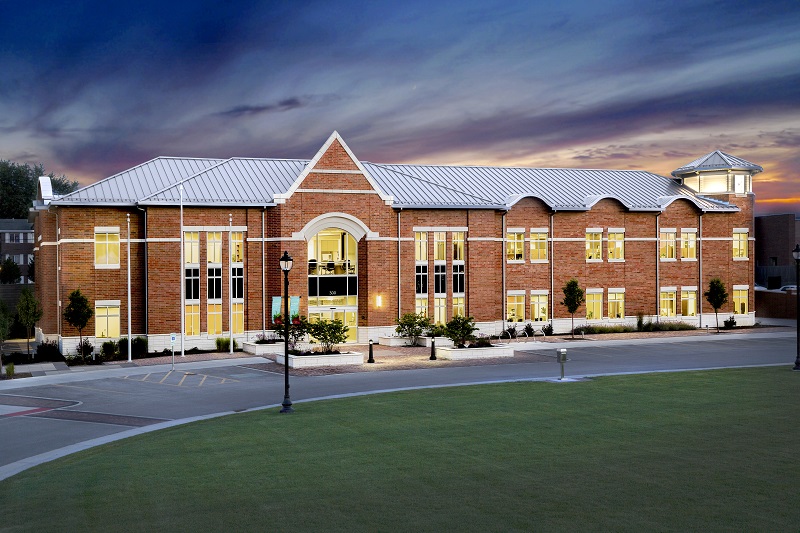After more than five years of planning within an unusual public-private partnership, a spectacular new village administration building has been completed in Mundelein Village, Ill. The two-story, 32,000 sq. ft. structure, which achieved LEED Gold status, replaces an aging building that served as the town’s headquarters since 1929.
Village officials hired Weston Solutions, a Vernon Hills, Ill. property development company, to oversee construction of the facility on a previously under-utilized industrial site. As part of the deal, Weston Solutions relocated its offices to the new building. The Village will utilize 15,000 sq. ft. on the first floor and Weston Solutions will occupy the second floor.
“The Village would not have moved forward on the project without Weston,” said John Lobaito, village administrator. “Weston’s shared vision made it the ideal partner and achieved our goal of attracting private investment.”
Architectural design was created by Wight & Company in Darien, Ill. The building design was inspired by historical elements in the community, and utilizes traditional masonry construction highlighted with a contemporary PAC-CLAD standing seam metal roof. “The slope of the hillside site made the roof particularly visible,” said Jason Dwyer, project architect. “We chose to use the metal standing seam panels to give the building a nice aesthetic appeal.”
A total of four Petersen products were used on this project. Approximately 14,000 sq. ft. of Petersen standing seam panels in two profiles were installed. Products included 18” wide Snap-Clad panels and 12” wide Snap-On panels, both finished in PAC-CLAD Cool Color Zinc. In addition, 3,300 sq. ft. of Petersen’s 7.2 Panel were used to shield a mechanical pit on top of the building. Finally, 1,000 sq. ft. of PAC-750 soffit panels were used to complete the roof concept.
All Petersen profiles were installed by Sullivan Roofing in Schaumburg, Ill. “This job was a complex mixture of panels and profiles, as well as difficult fabrications,” said Reid Whetham, project manager. “It was a challenging project with straight panels running into a curved valley. Petersen fabricated all of the panels and we custom-made the trim and flashings. We used the Snap-On panels to create the curved areas of the clock tower.” The PAC-CLAD panels were manufactured at Petersen’s plant in Elk Grove Village, Ill.

Sullivan Roofing is a regular user of PAC-CLAD products. “Probably a majority of our business is through Petersen,” Whetham said. “They do a great job with technical support, quality products and competitive pricing.”
The building incorporates numerous sustainable strategies to achieve LEED Gold certification.
Long-recognized as an industry leader in metal standing seam roofing products, Petersen also offers exposed fastener panels, flush panels, composite wall panels and column covers. All provide the well-known Petersen quality and are available in PAC-CLAD® Kynar 500® finish in 38 standard colors on steel and 37 aluminum. Most colors meet LEED, ENERGY STAR and cool roof certification requirements.
For more information on the complete line of Petersen metal products, call 800-PAC-CLAD or visit www.pac-clad.com.
Related Stories
| Aug 11, 2010
AAMA leads development of BIM standard for fenestration products
The American Architectural Manufacturers Association’s newly formed BIM Task Group met during the AAMA National Fall Conference to discuss the need for an BIM standard for nonresidential fenestration products.
| Aug 11, 2010
9 rooftop photovoltaic installation tips
The popularity of rooftop photovoltaic (PV) panels has exploded during the past decade as Building Teams look to maximize building energy efficiency, implement renewable energy measures, and achieve green building certification for their projects. However, installing rooftop PV systems—rack-mounted, roof-bearing, or fully integrated systems—requires careful consideration to avoid damaging the roof system.
| Aug 11, 2010
Pella introduces BIM models for windows and doors
Pella Corporation now offers three-dimensional (3D) window and door models for use in Building Information Modeling (BIM) projects by architects, designers, and others looking for aesthetically correct, easy-to-use, data-rich 3D drawings.
| Aug 11, 2010
AAMA developing product-based green certification program for fenestration
The American Architectural Manufacturers Association is working on a product-based green certification program for residential and commercial fenestration, the organization announced today. AAMA will use the results of a recent green building survey to help shape the program. Among the survey's findings: 77% of respondents reported a green certification program for fenestration would benefit the product selection process for their company.
| Aug 11, 2010
Seven tips for specifying and designing with insulated metal wall panels
Insulated metal panels, or IMPs, have been a popular exterior wall cladding choice for more than 30 years. These sandwich panels are composed of liquid insulating foam, such as polyurethane, injected between two aluminum or steel metal face panels to form a solid, monolithic unit. The result is a lightweight, highly insulated (R-14 to R-30, depending on the thickness of the panel) exterior clad...
| Aug 11, 2010
AIA Course: Enclosure strategies for better buildings
Sustainability and energy efficiency depend not only on the overall design but also on the building's enclosure system. Whether it's via better air-infiltration control, thermal insulation, and moisture control, or more advanced strategies such as active façades with automated shading and venting or novel enclosure types such as double walls, Building Teams are delivering more efficient, better performing, and healthier building enclosures.







